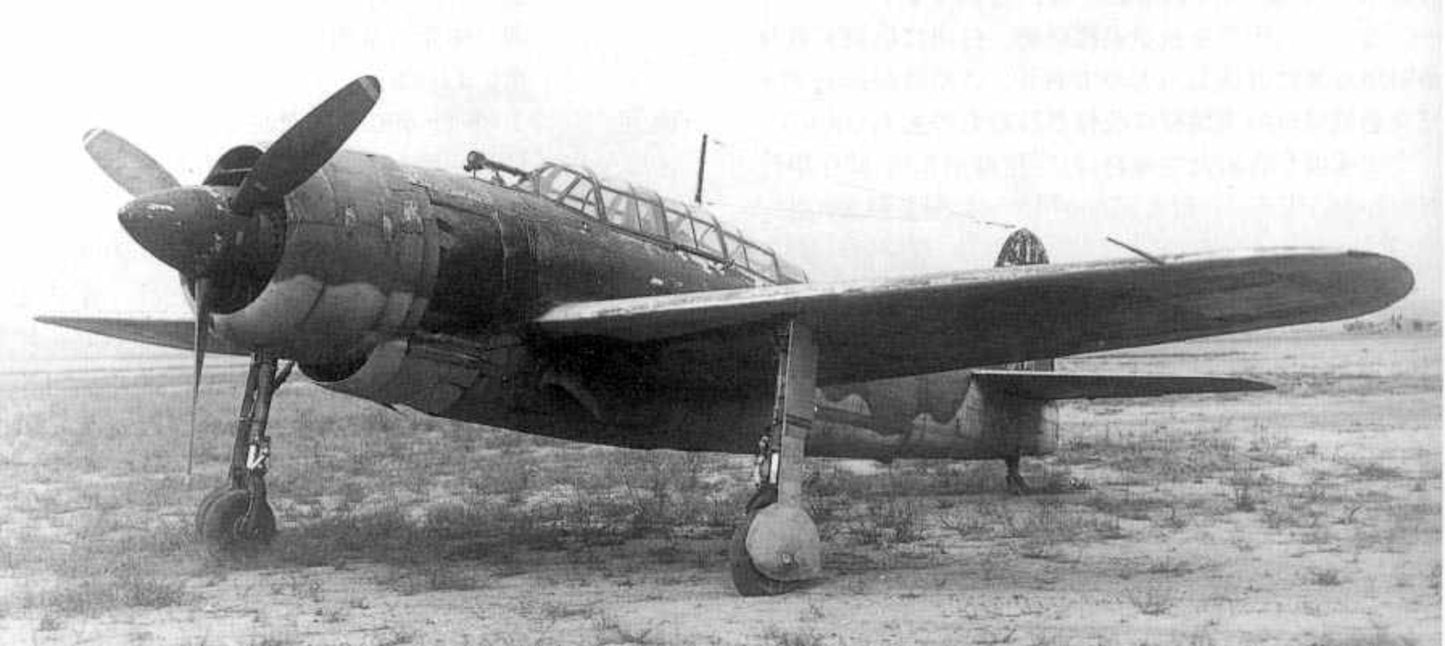BIG Jim Prints
1:200 Yokosuka D4Y1 Suisei (Japan)
1:200 Yokosuka D4Y1 Suisei (Japan)
1:200 Yokosuka D4Y1 Suisei (Japan)
The Yokosuka D4Y Suisei (彗星, Suisei, "Comet", Allied reporting name "Judy") is a two-seat carrier-based dive bomber developed by the Yokosuka Naval Air Technical Arsenal and operated by the Imperial Japanese Navy from 1942 to 1945 during World War II. Development of the aircraft began in 1938. The first D4Y1 was complete in November 1940 and made its maiden flight at Yokosuka the following month.[1]
While the aircraft was originally conceived as a dive bomber, the D4Y was used in other roles including reconnaissance, night fighter and special attack (kamikaze). It made its combat debut as a reconnaissance aircraft when two pre-production D4Y1-Cs embarked aboard the Sōryū to take part in the Battle of Midway in 1942. It was not until March 1943 that it was accepted for use as a dive bomber. The early D4Y1 and D4Y2 featured the liquid-cooled Aichi Atsuta engine, a licensed version of the German Daimler-Benz DB 601, while the later D4Y3 and D4Y4 featured the Mitsubishi MK8P Kinsei radial engine.
Like many other Japanese aircraft of the time, the D4Y lacked armor and self-sealing fuel tanks and it was not until the final variant, the D4Y4, that the aircraft was given bulletproof glass and armor protection for the crew and fuel tanks.[2] Nevertheless, the D4Y was one of the fastest dive bombers of the war, particularly the D4Y4 whom Max Gadney said was the "fastest dive-bomber of World War II" and that it was "faster than the Zero".[3] Only the delays in its development hindered its service while its predecessor, the slower fixed-gear Aichi D3A, remained in service much longer than intended. In October 1944, an attack by a lone D4Y resulted in the sinking of light carrier USS Princeton in the Battle of Leyte Gulf. Similarly in March 1945, a single D4Y managed to hit the carrier USS Franklin with two bombs, nearly sinking Franklin and resulting in the loss of almost 800 of her crew.[4] Famously, a D4Y was used in one of the final kamikaze attacks in 1945, hours after the surrender of Japan, with Vice Admiral Matome Ugaki in the rear cockpit.
Couldn't load pickup availability
Share

